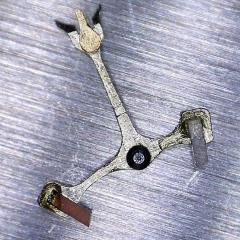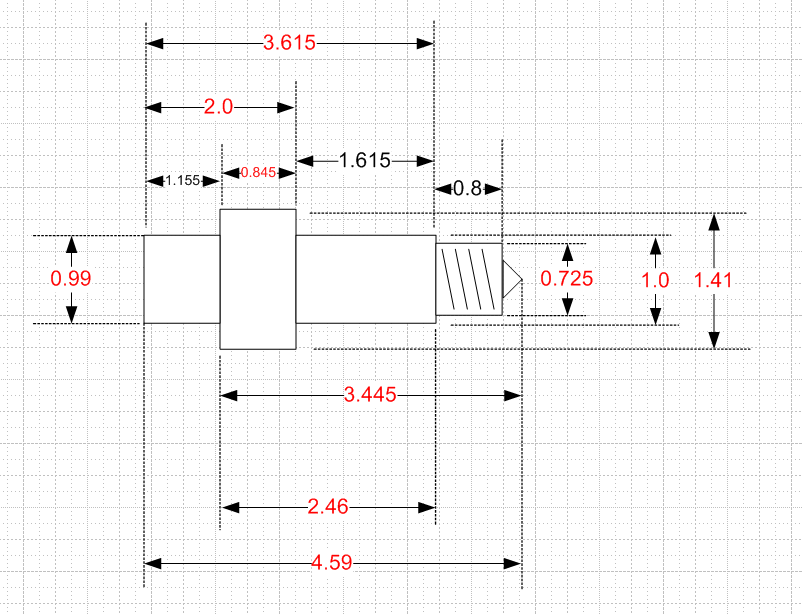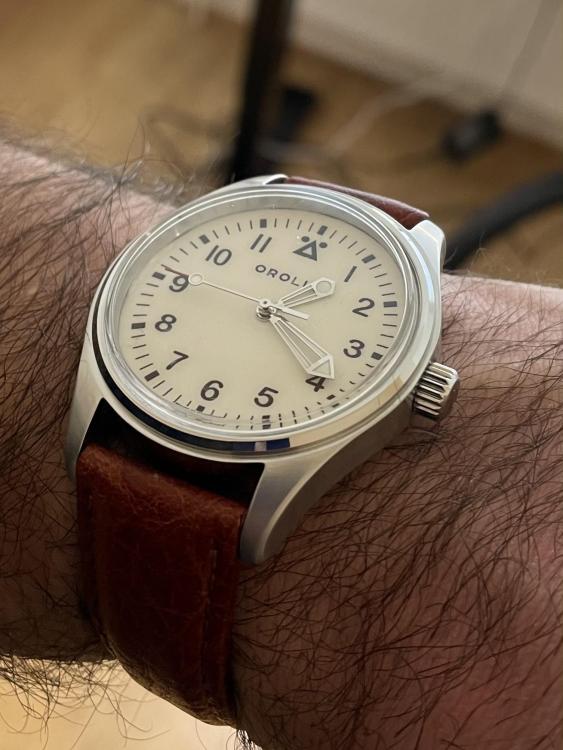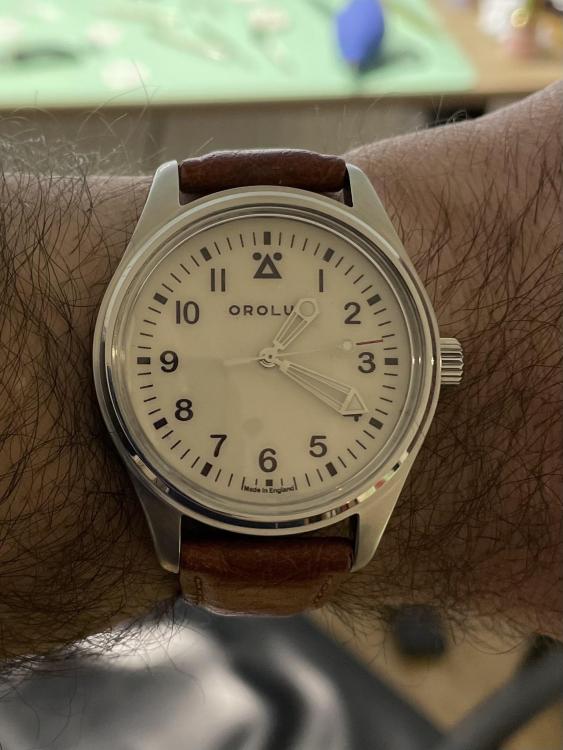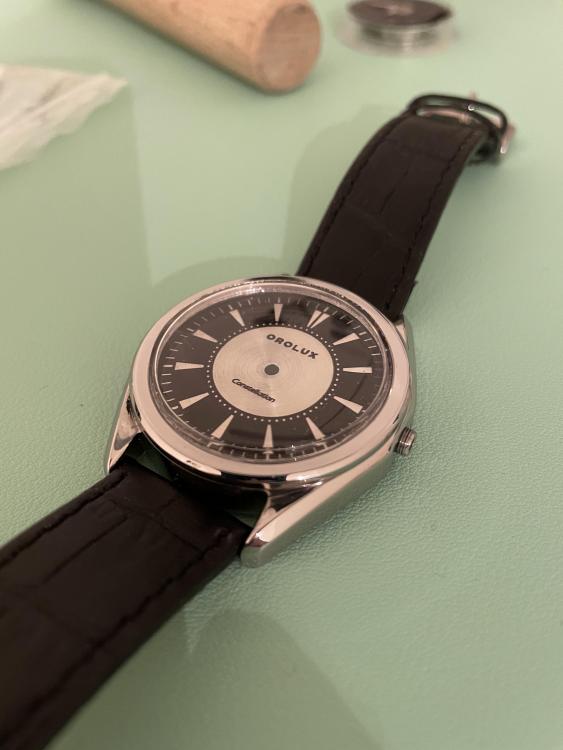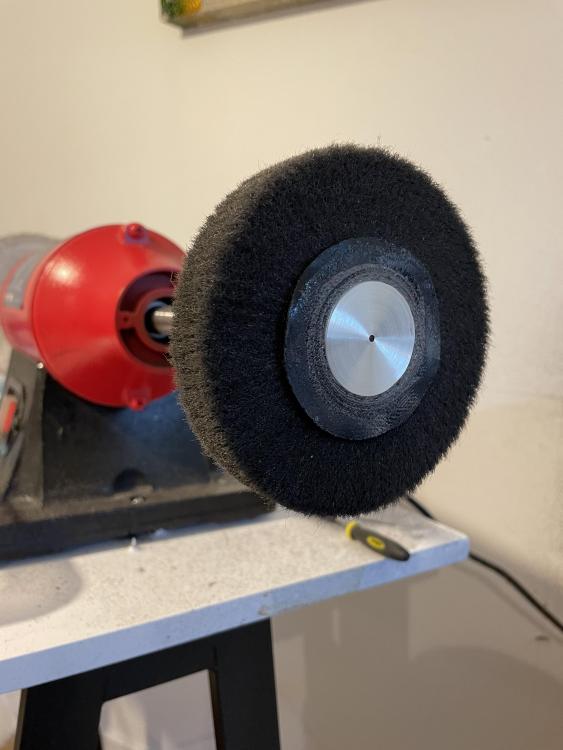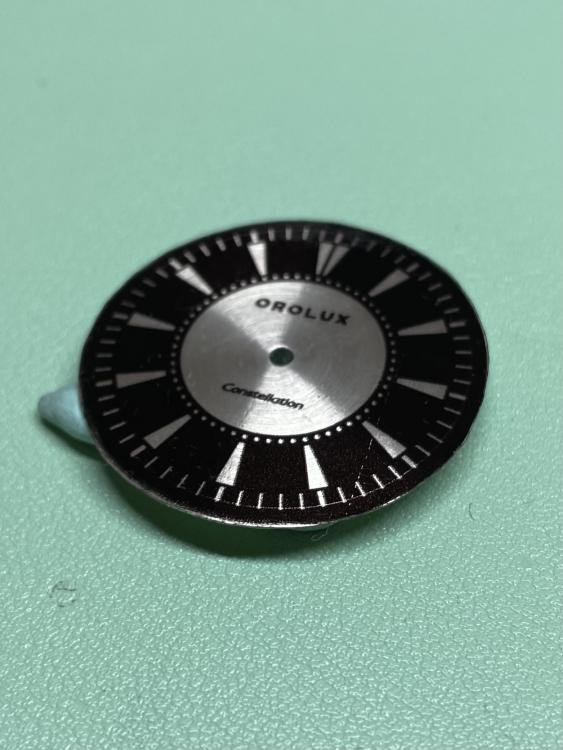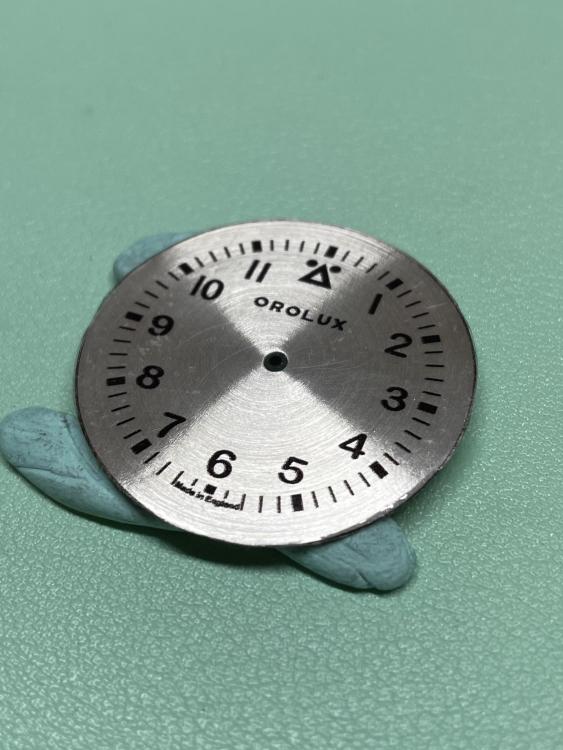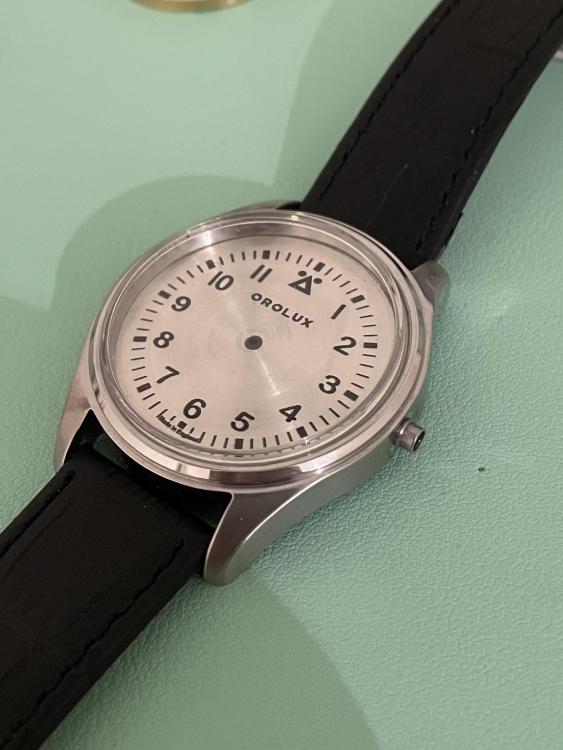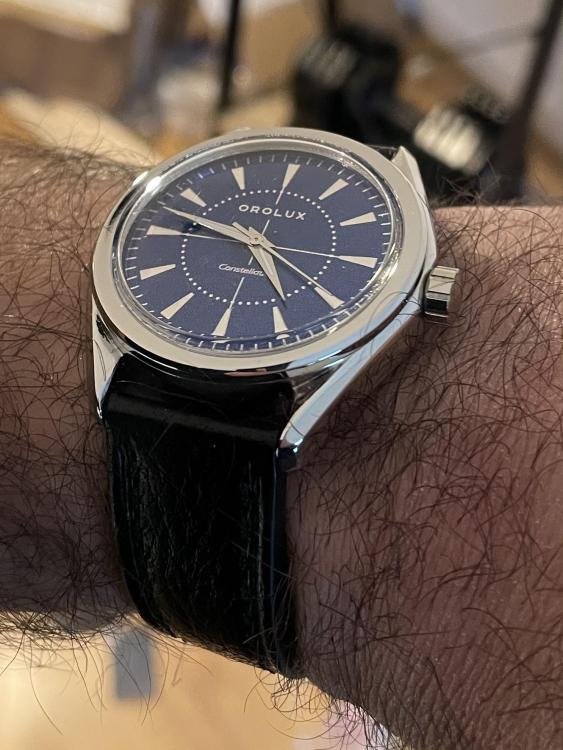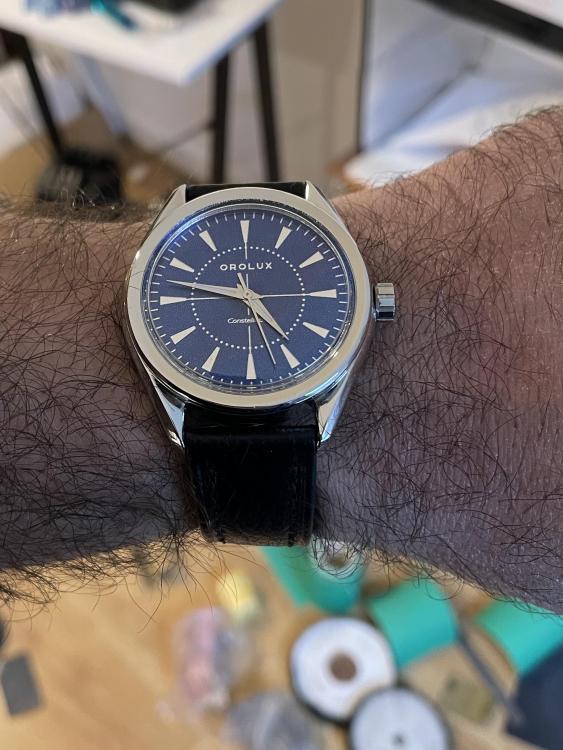Leaderboard
Popular Content
Showing content with the highest reputation on 12/03/21 in Posts
-
Sometimes I'll do something similar with hairspring rinse. Place a large drop right on the balance wheel hairspring to see if I can loosen things up. It's not a substitution for cleaning it's just sitting get the thing to run a little and see how it looks on the timing machine. Some shops taken a step further and do something called pre-cleaning. This is where the hands and dial come off and The entire assembled movement is usually a separate cleaning machine. It's running a shorter cycle to the pre-cleaned the entire watch. Then when they disassemble or work on the watch they can better see the condition of the jewels whether they're cracked they can do their adjustments. Because classically and watch repair your repair the watch first then you clean it. But he oftentimes can't see what you need to see if the watches dirty. This is why they preclean then they do the repairs then they do a final cleaning And at that point time though disassemble everything for the cleaning. But the catch to free cleaning is if you have stuff that has worn and you have metal shavings precleaning obliterates all that you may not see destruction. Then I don't suppose we can have a picture of what yours looks like on the timing machine before you do any of this?2 points
-
Hi Gents of Leicester, manufacturers of the Pulsyenic Master clock widly used in factories during the 50s onwards. My brother worked for Seimens and repaired/maintained some up into the 90s. the factories had a master clock and several slaves which got their pulses from the master and one was used as the clocking in clock for the time cards for the workers. Values vary according to condition and originality as some were modified for domestic use. They were noisey in operation with a noticable clunk when pulsed. The one shown looks in good condition and therefore will pull a fir price.1 point
-
Hello L. Welcome to the club. I heard some folks have had better luck using a staking set to drive the min wheel home with. Following your thread with interest. Good luck.1 point
-
1 point
-
OK on the timegrapher the s/d was av 41 but has now stopped and so presume sticking. Interested to know what FU,FD,PU positions are though. I had seen those pieces on Ebay but I think I shall wait for a complete unit. Is Ebay the only source though? Is there not a dedicated place to go other than that? .....and Plato, Thanks for that ......Am going in!1 point
-
Looking forward to it. I have so many practice pieces inbound. and untold numbers already in my little portable watchmaker's bench and the boxes that fit inside it. I am pretty sure that the last time i looked, for example, it appeared that i had bought an entire zip-lock sandwich bag full of Lucerne jump-hour (or at least direct-read) watch heads. And i have a Ruhla pin-pallet jump-hour that i serviced but which still had issues like being way out of beat. There are a lot more watch servicing videos online these days, and it's clear that there were some things i was doing wrong 10 years ago. And some things i was doing right, and some things that seem to be a matter of some debate. For example, some of the pros put a few dabs of grease on a few spots on the stem and apparently ignore the rest of the keyless works, and some of them put some dabs of grease on all of the teeth of the winding works and on the yoke, and maybe none on the stem. Not to mention whether you lubricate both of the pallet stones. My old lubrication kit included both KT44 and Nye PML for some reason but no braking grease for the bridles in automatic watches. I suspect that both of those are still good for what they are good for. Frankly, I suspect that a little dab of Superlube or even the Valvoline moly grease i pump into the birfield joints on my 1994 land cruiser would be just fine for most of the grease positions on a watch movement. Considering i am just messing with my own watches, anyway. I also managed to get tiny bottles of Nye Clock oil, Nye watch oil, and Nye "fulcrum" oil. Nye Lubrication seems to be far more focused on aerospace and you can barely find a mention of horological products on their website. The safety sheet for Nye Fulcrum Oil i found says that it's a mix of synthetic oil and straight up olive oil? You'd hope that they put that on the form as a euphemism for oleic acid? I have a friend who is a retired organic chemistry professor, he assures me that 'pure' (not-virgin) olive oil is almost entirely oleic acid. There are also tiny vials of Novostar R and B. I struggle with the concept that a fully synthetic oil, in a sealed container, in the dark, would have a shelf life of less than 5 years. I suspect that the full synthetic Nye oils are fine. I don't have spec sheets for the Novostar oils, so maybe after 10 years those are not in good condition. My Esslinger order includes moebius 8000 (because cheap and general purpose), 9010 (because so universally recommended), and 8020 for bridles on springs wound automatically. And the 50 centistoke pure silicone oil for pallet stones. $30 for more 8020 than i will ever use even if it never expired is kind of a kick in the pants. They should sell it a gram at a time. Maybe if other cheap bastards in need want, i can scoop some into a little glass vial or plastic tub and mail it out. I'm also waiting on the ubiquitous Model 1000 timegrapher from china. How my heart sunk, weeks ago, when the delivery estimate said January. For cleaning - back in the day I was doing wash in "odorless mineral spirits" aka stoddard solvent, and two stages of rinse in VM&P Naphtha. In little baskets i formed out of a very fine expanded aluminum mesh that i salvaged from a very old CRT monitor where it served RF shielding duty, in pimento jars, in warm water, in a Branson B200 ultrasonic bath i bought 2nd hand. And Troop-Balas one-dip for the hairspring. aka Trichloroethane, TCE, a chemical drycleaners used to use. You'd think there would be cheaper ways to get the stuff, but it turns out that the little one-dip bottle or can is the only way to buy less than a quart of it. I think i have another one-dip bottle from when i almost got back into watchmaking a couple years ago. The original one evaporated through the cap. This actually worked pretty well. The occasional part needed extra attention with pegwood but that seems to be the norm no matter what you use. I'm too cheap to buy a gallon of an L&R product for $55 plus ship. Back in the day, my chemist friend and i dug through L&R's safety sheets and determined that their wash product is basically almost 25% mineral spirit (heavy distillate), almost 70% naphtha (light distillate), 3-4% oleic acid, and 1% secret sauce. The chemist stated that the oleic acid should leave a single-molecule-thick film on the metal, protecting it from corrosion. And maybe if you're a real professional watchmaker, sure, the secret sauce and the science behind it is worth it. Most of their rinse products are just the mineral spirit + naphtha blend. More recently i dug through Zenith Solution's safety sheets and discovered that several of their products are straight naphtha in different jugs. That Zenith Hi-Solv is Crest Hi-Solv -- a paint prep solvent for automotive paint work -- in a different can. That Zenith Hi-Tech is probably some brand of Naphtha Substitute for CARB-restricted regions. So yeah. I'm gonna go to the hardware store and buy a quart of mineral spirit and a gallon of naphtha. And on the advice of my chemist friend, after i mix up some solution i will put it in a mason jar in the freezer for several hours, then swish it around and run it through a coffee filter while still freezing cold, as this will cause any waxes, paraffins, or greases in solution to plate out and stick to the jar or the filter. I'm considering calling around to the paint stores to see if anyone stocks Crest Hi-Solv. I also have a couple quarts of pure technical grade D-Limonene here. A really excellent solvent, but it does not evaporate clean, so anything i clean with that will need to go through the regular wash and rinse cycles after. If you go looking for limonene, a lot of products labeled "pure" limonene are yellow in color and in actuality are just chemically dried expressed citrus rind oil, which is about 99% limonene, and the other 1% is a problem. If it doesn't dissolve polystyrene foam on contact, it's not the high-test limonene. Look for technical or reagent grade water-clear (colorless) d-limonene. If for no other reason than to remove adhesive residues from anything that isn't a styrene and you can clean again or don't mind smelling of lemons.1 point
-
1 point
-
I have posted a lot on the Cricket. Wanted to update my latest work regarding the setting lever screw. I made one from a partial rusted reference but was not confident about the measurements. Well, I got another Cricket for restoration and decided to do second analysis starting with a good screw. Here are my results for posterity. The red numbers are actual measurements. The black numbers are calculated (or approximated) based on measurements. The numbers do not work out perfectly due to measurement tolerance. These measurements were made using my JKA Feintaster. The threads appear to be tap 13 on my tap plate.1 point
-
The Orolux ‘Mil-spec’ (working title, lol) has arrived! I can’t believe how excited I am! I know it’s very similar to every other military inspired watch out there, but this one is mine (guess the military film reference). And I’m pretty sure most modern mass produced military watches don’t have an enamel dial.1 point
-
1 point
-
1 point
-
1 point



